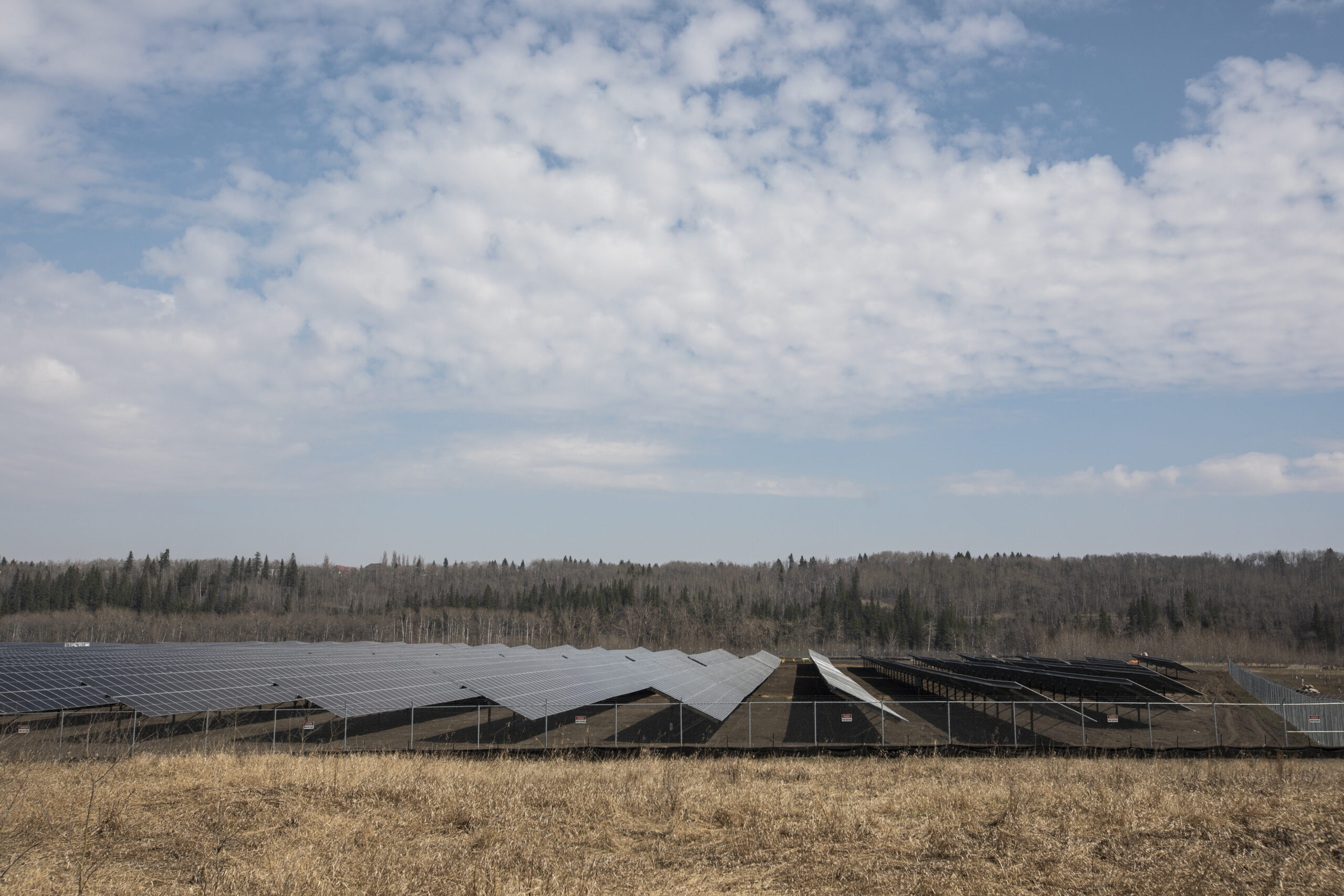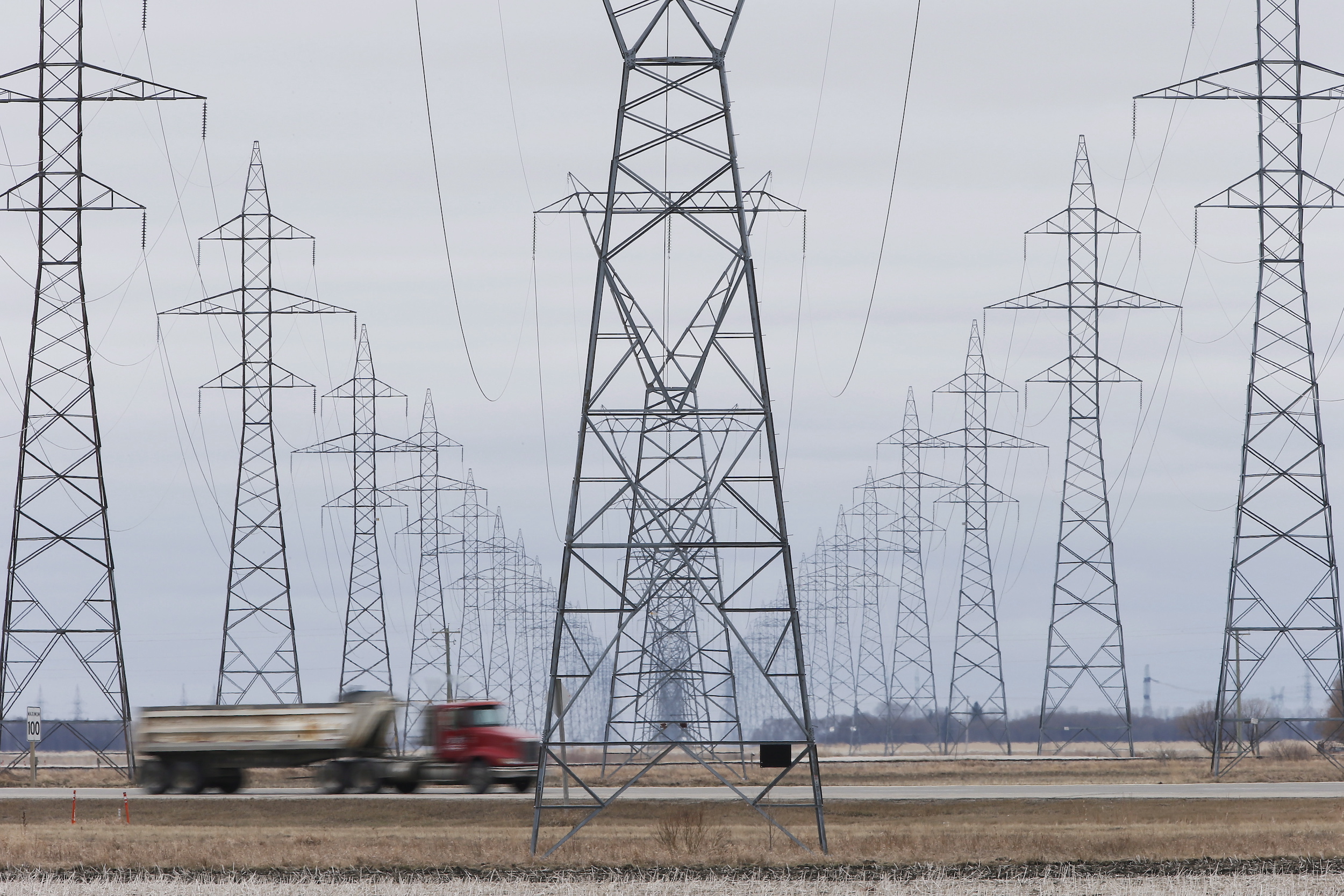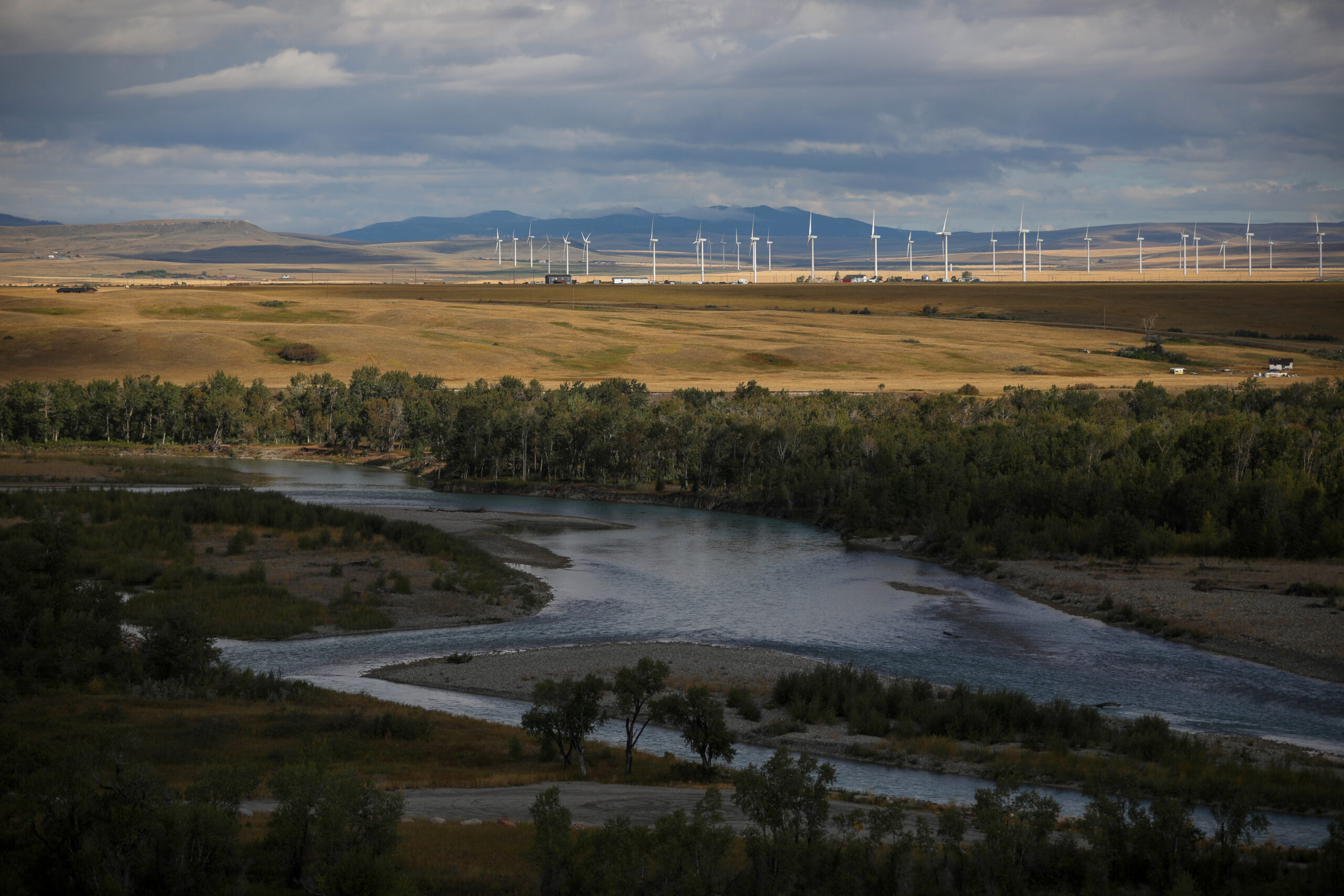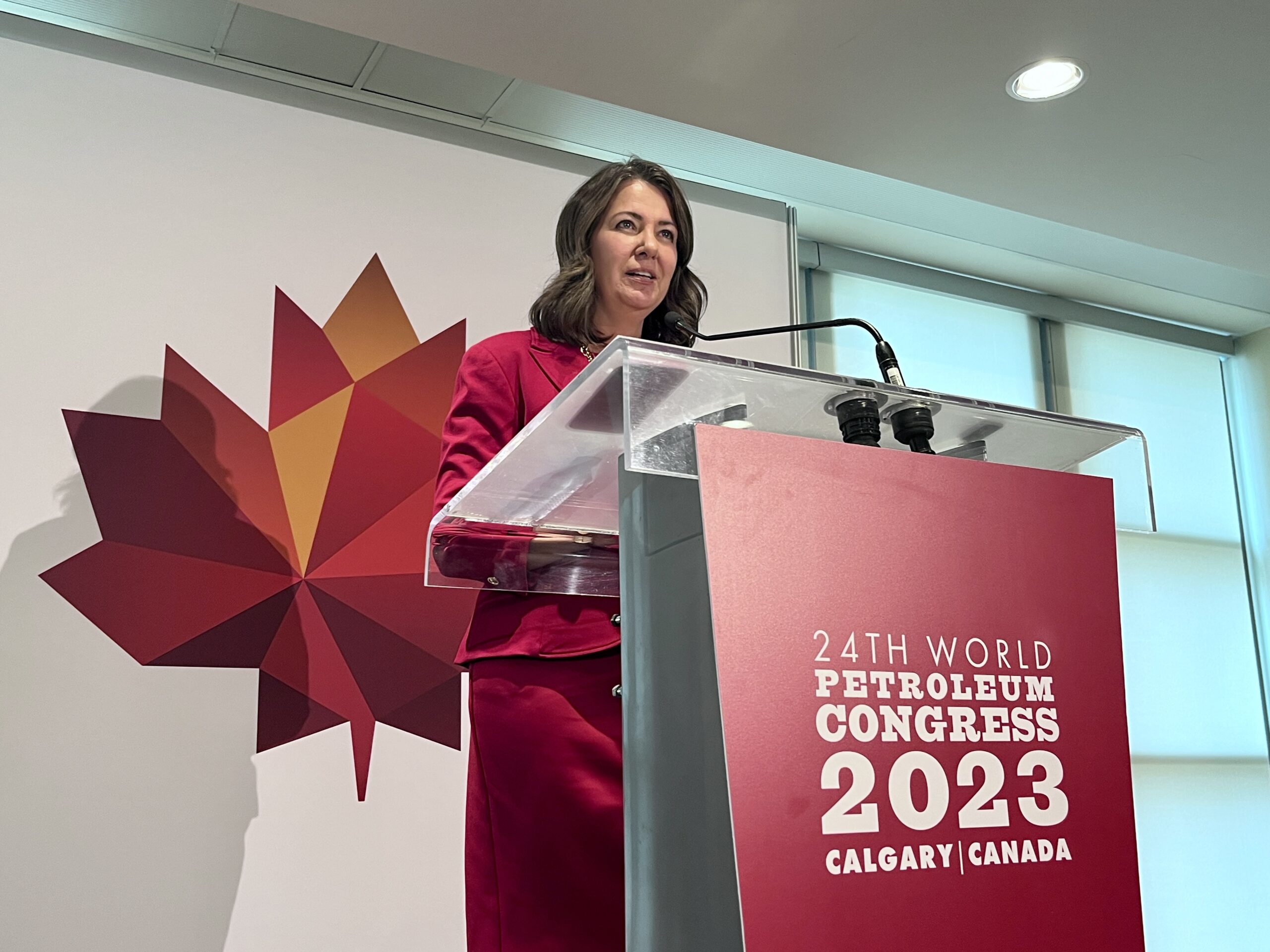
Ontario’s public service heads back to the office, meaning more traffic and emissions
For 15 years and counting, my commute from Mississauga to Toronto has been mired by...
There’s been a lot of talk about Alberta’s electricity grid lately. There were political hot potatoes: the renewable energy surge, followed by the renewable energy pause, and the federal clean electricity regulations, followed by Alberta’s fierce pushback.
Then this week, another Alberta grid alert was issued as the province baked under extreme heat.
Back in January, Albertans got an emergency alert telling them to conserve power as the grid was strained by some of the coldest temperatures in 50 years. It wasn’t the only Alberta grid alert to be issued this winter.
And then there are the record-breaking electricity prices.
And, at the end of February, the province’s moratorium on new renewable energy projects is set to end — meaning conversations about how to expand Alberta’s grid are only going to continue.

All of this means a lot more people are looking at how Alberta’s electricity system works and wondering what to make of it all.
The province’s so-called deregulated market is unique in Canada and is considerably more complex to consider when you factor in all the companies participating, how they are and aren’t regulated and how it all fits together.
In short, Alberta’s grid is confusing.
Here’s a breakdown of the basics to get you from head scratching and brain melting to something of a lightbulb moment.
Easy, right? Well…
“It’s a bit confusing for the average person, how that all works. But that’s sort of how it goes,” University of Alberta engineering professor Tim Weis says.
Okay, rough start.
Put simply, electricity comes from many different privately owned generators.
Most of the electricity generated in Alberta, on average almost 80 per cent, is from natural gas. A few big players — Enmax, Heartland Generation, Capital Power and TransAlta — operate most of those plants, as well as the remaining coal plants, which are scheduled to go offline this year.

Wind is the second biggest source, and renewable generators are among the whole lot of smaller producers in the province.
Then, there are even oilsands companies who produce power for their own operations then sell excess to the larger grid.
And that’s just the power generated here. The electricity can “come from everywhere,” according to Jim Wachowich, a regulator lawyer who has watched Alberta’s system evolve since the days of government control that ended in the ’90s.
That’s because Alberta’s grid is linked to other jurisdictions across western North America and it can buy or sell power across the region.
All of that electricity can then feed into the grid.
“Typically, when we think about the grid itself, we think about all the infrastructure — from generators all the way to the wire that hits our house,” Weis, who specializes in renewable energy, says.
Think of that big power plant, or wind or solar farm, then think of the wires going from the generation source and travelling along the big high-tension wires criss-crossing the province.

Those big lines are the transmission, bringing electricity to regions, cities and towns. That power is then distributed through smaller wires, which then connect to your house.
All of that is the grid. And in Alberta, all of it is owned by private companies or companies controlled by municipalities, such as Enmax in Calgary. And each little corner of the province has its own franchise, or regulated monopoly, for building those wires and delivering that power (again, such as Enmax in Calgary).
No, not really, but there’s a whole lot of private ownership of everything from generation plants to overhead wires and everything in-between.
If you look to other provinces, the prevailing model is a Crown corporation that generates and distributes electricity, with prices set by a regulator. This was the model in Alberta until the mid-to-late ’90s.
“In Alberta, we have a deregulated system,” Weis says.
“It doesn’t mean there’s no rules, it just means that [generators or companies] don’t stand in front of regulators and figure out what a reasonable price plus profit is going to be. They compete with each other in sort of an open market to figure that out.”
That said, there are some caveats.
There are three provincial agencies poking around in Alberta’s market — the Alberta Utilities Commission (AUC), the Alberta Electricity System Operator (AESO) and the Market Surveillance Administrator.
At the top of that chain is the commission, which regulates power plants, transmission and distribution in one form or another. It regulates the whole system and approves or rejects power plants and transmission lines. It is also conducting the government’s inquiry into renewable energy projects after being told to pause all renewable electricity project approvals for six months. That moratorium is due to lift at the end of February.

Then there’s the system operator, which looks at the real and forecasted energy needs of the province and then sits at the intersection of all those generators in order to fulfill all of that demand at, in theory, the best price. It decides who provides the power and who doesn’t, based on bids and demand. Imagine someone sitting at the controls, allowing some electricity to flow into the grid and preventing others and you’ll have a decent visual idea.
It is also responsible for peering into its crystal ball to forecast how much energy we’ll need in the future and whether we have the transmission capacity to deliver it.
The Market Surveillance Administration, a lesser-known agency, watches over all of the companies in the market to ensure they are playing by the rules and not taking advantage of the mishmash that is Alberta’s grid.
Think of the administration as the police. Companies can’t get together and all agree to charge high prices to line their pockets, for example. Although there is some wiggle room on setting prices — more on that later.
All of those provincial entities are — or are supposed to be — independent of government.
If Alberta’s system were to work purely as imagined and designed, the government wouldn’t play much of a role at all. It would merely set everything up through legislation then quietly back away to let the market do its thing.
“We have, sadly, a very interventionist history with all the governments,” Wachowich says.
Along with last summer’s last-minute moratorium on renewables, there have been rate caps and freezes, refund cheques dolled out and, recently, deferred payments on sky high rates. Some of that interference can help with high bills — and sweeten up voters — but more often than not, the help is negligible and largely makes things more confusing, undermining the logic of the system.
“Sometimes what the government does is, in essence, distrusting the independent entities that they’ve created,” Wachowich says. “The [system operator] is supposed to be an independent system operator. The Alberta Utilities Commission is supposed to be the independent utilities regulator. And those things need to be independent to do their job properly.”
That government intervention sends mixed signals, and confusion, into a market that is supposed to be operating independently.
First, there’s what’s known as the wholesale market. All of the generators compete to sell their electricity every hour — each submits the price it’s willing to sell at to the Alberta Electricity System Operator. The operator buys from the generators with the best prices, as long as they’re also producing enough to cover the forecasted energy needs of the province.
If a generator’s power is too expensive, it has to wait until the next round of bidding. The winners are all piled into the power pool, sending their wares to the wider grid.
Big industrial users can buy directly from that wholesale market, but most Albertans rely on retailers — such as Enmax or Epcor — buying electricity at those wholesale prices and then selling it to us. Some retailers are regulated and some are not, just to make things murkier.
Too easy?
Some of those retailers buy long-term contracts at fixed prices to try to avoid some of the price volatility in Alberta, where prices can change by the hour and where average prices in 2023 went as low as 16 cents per kilowatt hour to as high as 32 cents.
Retailers offer a floating rate, set by the market, and a regulated rate, set by the Alberta Utilities Commission, for consumers to choose from. It’s a gamble on which will provide the best price. “So regardless of what the pool price is, I can go off and buy a fixed-term, fixed-price contract,” says Wachowich. “So my price is locked in for, say, two years future delivery.”
Those big transmission lines we talked about earlier are privately owned, but they are regulated and carry everyone’s electricity. Companies can’t just run willy-nilly across the province building power lines that may or may not be used.
“If you go back way to the beginning of the system, so you go back to the Edison versus Tesla debates, when they were first building these things, they actually had individual lines, like from my power plant, right to your house, to your neighbor,” says Weis, referring to Thomas Edison and Nikola Tesla, two pioneers in electricity transmission, both born in the 19th century.
“My neighbor might be buying from the other guy, and so he would have a line and the next guy would have a line next to another line and it was just a disaster.”
The Alberta Electricity System Operator determines when new lines are needed and where. Companies then bid on building those transmission lines and appear before the Alberta Utilities Commission to seek approval for them, based on expected supply, demand and rates.
The way Alberta’s market is set up, where everyone is able to compete to sell their product, means there tends to be a lot of room on those wires so no one misses out.
“If someone’s boxed out by congestion on the system, you’re not getting the optimal pricing dynamic,” Wachowich says.
Then there are the companies, like Enmax and Epcor, that manage the wires that eventually go into a house. Those companies are responsible for maintenance and repair when, say, a tree falls or an ice storm hits.
Surprise! You do.
“What the retailer does is take all the costs of the distributor, all the upstream costs, the power costs, the transmission costs, the [system operator] costs, transmission costs, distribution costs, and they put it into the bill,” Wachowich says. “And that’s how the whole system gets compensated.”
He says Alberta adopted what’s known as the Enron model (those of a certain age will remember that company for other reasons): the theory that presenting all of the details on a customer’s bill ensures transparency and allows customers to make informed decisions.
If you open a bill in Alberta, it shows the distribution charge, transmission charge, balancing pool allocation, rate riders and local access fees — clear as mud, yes?
“Most residential customers just look to the bottom line on their bill,” Wachowich says. “And tragically, recently, in Alberta, the bottom line on those bills has been hundreds of dollars higher than it previously was.”
In the simplest terms: Alberta only has so much generating capacity.
“You can ask everybody to generate, you know, we turned our storage systems — our batteries were all on,” Weis says of the recent grid alert in Alberta during a cold snap. “But at a certain point in time, you do run out. And that’s when you start asking people to shut off.”
Weis says there are agreements with some large power users, who are compensated to shut down in situations like these, but even that won’t be enough if the system is pushed too far. That’s when the operator cuts power involuntarily — a blackout.

The Alberta Electricity System Operator’s forecasts are meant to ensure there is enough supply, but there are going to be times when things don’t work out. In January, there were gas plants that were out of commission, the wind wasn’t blowing and it was night, so solar wasn’t a backup. And demand was through the roof due to extremely cold temperatures. An Alberta grid alert was issued.
It’s not easy to just buy more power from the larger North American grid, either. There are limits on both the space available on transmission lines into Alberta and how much power others have to sell. And even if there is line space and power for sale, Alberta has to compete with all other interconnected jurisdictions on price.
“California has a higher maximum price than Alberta does,” Weis says. “So if we’re both short at the same time, California can outbid us.”
This is a confusing point of debate in Alberta right now. You might have heard the terms “energy-only market” and “capacity market” being tossed around.
What Alberta has now is an energy-only market, which means producers are only paid for the electricity that is used in the province.
“We don’t actually contract anyone to build a new power plant, we just kind of hope that the market price will signal the next time to build,” Weis says.
There is no money to be made to have a power plant — and its staff — sitting there in case it’s needed in a crisis.
A capacity market would pay generators money to have more electricity on hand for when it was needed. In a capacity market, there would be money to staff and maintain those plants as they sit and wait. Alberta started to move in that direction in 2016, but the United Conservative Party government quashed those plans when it came to power in 2019.
Well, there are rules in Alberta that prevent, say, the four largest generators from getting together and driving up consumer costs by submitting artificially high bids.
Generators aren’t allowed to physically withhold power, either. If they have a plant that’s operating, they can’t just decide not to provide that electricity and create artificial scarcity in the market.
But…
“You do have the ability to do what’s called economic withholding,” Weis says.
“No one’s stopping you from bidding very, very high prices which can then drive prices up. The disincentive to do that is if someone undercuts me, then I might not be able to get into the market.”
There are also just a handful of companies in control of the majority of the generating capacity in Alberta, which can also raise concerns.
“If I offer a really high price and one of my powerplants happens to be down for maintenance, you know, wink wink nudge nudge, then I can drive prices up,” Weis says.
Economic withholding has been cited as a factor in high prices across Alberta over the past two years, but some say that should ease as new plants come online later this year and increase competition.
That could also mean lower prices are on the horizon, but we’ll have to let the market, or the government, and maybe some regulation, determine that.
Updated on Feb. 26, 2024, at 3:42 p.m. MT: This story has been updated to correct a spelling of a name. It is Tim Weis, not Weiss as previously stated. This story was further updated on July 9, 2024, to include recent grid alerts issued in response to a heat wave.
Enbridge Gas will face Waterloo Region in a hearing before the Ontario Energy Board to renew an agreement that would allow the company to continue...
Continue reading
For 15 years and counting, my commute from Mississauga to Toronto has been mired by...

For our last weekly newsletter of the year, we wanted to share some highlights from...

The fossil fuel giant says its agreement to build pipelines without paying for the right...